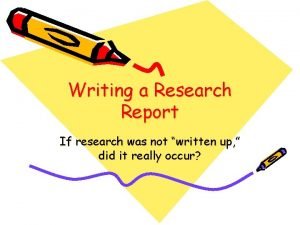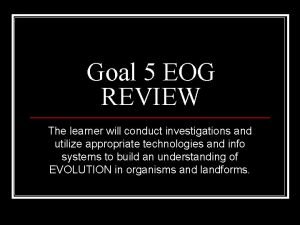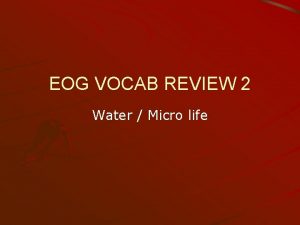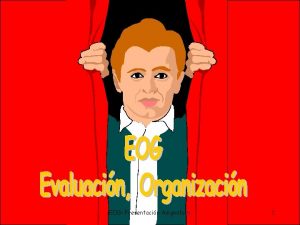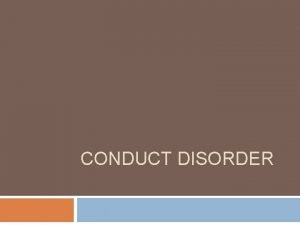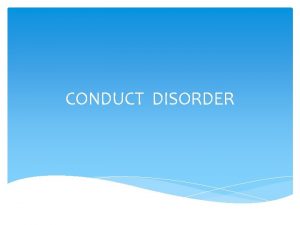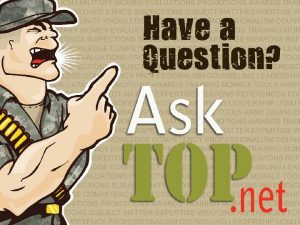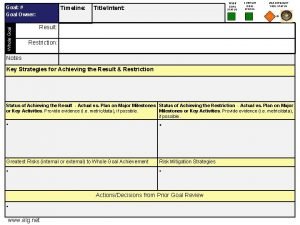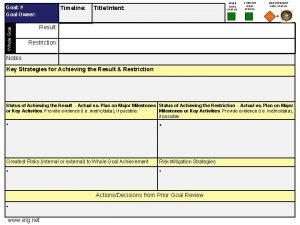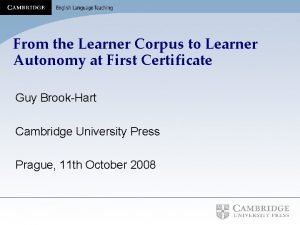Goal 7 EOG REVIEW The learner will conduct


















- Slides: 18

Goal 7 EOG REVIEW The learner will conduct investigations, use models, simulations, and appropriate technologies and information systems to build an understanding of MICROBIOLOGY.

Comparing Microbes n Viruses: a particle that consists of nucleic acid enclosed within a protein shell that requires a living cell in order to reproduce. Viruses lack nearly every characteristic of life (except they can reproduce). Viruses either have DNA or RNA for their genetic information. Viruses have a protein shell called a capsid. Some viruses have an envelope that aids in attaching to the cell that the virus is going to attack.

Prokaryote/Eukaryote Prokaryotes: unicellular organisms that do not have a true nucleus and do not have true membrane-bound organelles. Ex. Bacteria n Eukaryotes: do have a true nucleus and membranes around organelles. Ex. Humans n Most microbes are prokaryotes n

Bacteria n Bacteria are named by their shapes: n n n Coccus (looks like a coconut): means round Bacillius: looks like a chain Spirillum: looks like spaghetti noodles Bacterial cells are enclosed by a cell wall: a rigid structure that supports and protects the cell. Bacterial cells do not have a nucleus. Two kindgoms of bacteria: Archaebacteria and Eubacteria.

Protists and Fungi n n n Protists are Eukaryotes: organisms that do have a true nucleus and membrane-bound organelles. Have both multicellular and unicellular organisms Fungal cells have a cell wall Fungal cells feed acting as decomposers, they digest matter in the environment and then take the matter they use as food into their cells. Some fungi are parasites feeding on body fluids and tissues of other organisms.

Microbe and Disease n n Disease: any change that disrupts the normal function of one or more body systems. Noninfectious diseases: diseases that are inherited and are not spread from one organism to another Pathogen: any microbe that causes disease Infectious disease: disease that caused by a pathogen and can be spread from one organism to another. These diseases are called contagions.

Diseases caused by Viruses n Examples of diseases caused by viruses: n n n n Influenza (flu) Polio Smallpox Yellow fever Measles Severe Acute Respiratory Syndrome (SARS) AIDS Cancer, like HPV or Human Papilloma Virus

Con’t n Viruses cause disease by either damaging or killing cells. It will attach itself to the cell and inject it’s DNA or RNA into the cell. The cell will then make copies of the viral DNA/RNA everytime it goes through mitosis. Eventually, the cell will burst and the new viruses will be released into the body of the organism being infected.

Diseases caused by bacteria n Diseases n n n Cholera Diphtheria Food poisoning Gonorrhea Leprosy Lyme disease Stomach ulcers Pneumonia Syphillis Tuberculosis Typhoid fever

Diseases caused by Protists n Examples n n Trypanosomiasis Malaria Dysentary The protists that cause each of these diseases are examples of parasites. Parasites: an organism that derives nourishment or habitat from the tissues or fluids of another organism.

How infectious Disease Spreads n n Under ideal conditions, a bacterial cell can divide as often as every 30 minutes. A vector is an organism that helps spread disease. Ex. Mosiquitos spread malara. Epidemic: major outbreak of disease Carrier: an organism that is infected with and can transmit a disease-causing microbe to another living organism, even though the carrier may not show any symptom of the illness. Ex HIV is spread by a carrier, who does not “look” sick.

Con’t n Many contagious diseases such as the common cold and the flu can be transmitted directly from one perso to another without a carrier. n n Contagious disease: a disease that can be spread from one person to another. These can be transmitted through the air when a person sneezes or coughs.

Sexually Transmitted Diseases n Sexually-transmitted diseases: diseases that are spread by sexual contact with an infected person. n n Examples: syphilis, gonorrhea, chlamdydia, hepatitis, genital herpes, AIDS. One of the most dangerous things about STDS is that people can carry and spread most STDS without even knowing that they are infected with the disease.

Preventing and Treating Diseases n Helpful behaviors to prevent disease: n n n Avoid contact with a person who is ill Washing your hands frequently Eating nutritious foods Maintaining a healthy body weight Getting enough rest

Immunity n There are two ways to get immunity to a disease: n n Active Passive n n Active immunity: obtained by exposure to the pathogen. Your body becomes exposed and makes antibodies to help destroy the pathogen. One way to get active immunity is by getting a vaccine. Passive immunity: involves transferring antibodies made in one organism to another organism. Ex. A person who has been vaccinated against rabies can give their rabies antibodies to someone else who has been bitten by a dog who has rabies.

Antimicrobial Products and Antibiotics n n n Antimicrobial products: a substance that is designed to kill microbes before they can enter your body. Ex. Many handsoaps and hand sanitizer. Antibiotics: drugs that kill bacteria or prevent reproduction. Both antimicrobial products and antibiotics are used to help prevent the spread of diseases.

Antibiotic Resistance The decrease in the effectiveness of penicillin is the result of a problem called antibiotic resistance. n Antibiotic resistance: when bacteria develops a tolerance to and survive treatment with drugs that once killed them. This happens from overuse of antibiotics and because we do not always take all of the medicine the doctor prescribes to us. n

Biotechnology and Daily Life n n Biotechnology: the use of living organisms, or parts of organisms to produce products used by people. Some products resulting from biotechnology include medications and foods. Biotechnology is used to produce vaccines. It is also used to alter crops in agriculture to make them resistant to disease, herbicides and frost. Biotechnology provides jobs for the community. The use of biotechnology presents ethical issues that the scientific community must face. Concerns have been expressed about the safety of genetically manipulated food crops.
 8th grade science eog
8th grade science eog Eager vs lazy classification
Eager vs lazy classification Eog grading scale 1-5 nc
Eog grading scale 1-5 nc Eog test taking strategies
Eog test taking strategies Means earth (eog)
Means earth (eog) Erg eog
Erg eog Eog grading scale 1-5
Eog grading scale 1-5 Nctest secure browser
Nctest secure browser Georgia milestones score range
Georgia milestones score range Eog
Eog Georgia milestones eog score interpretation guide
Georgia milestones eog score interpretation guide Eog 3rd grade reading
Eog 3rd grade reading Means earth eog
Means earth eog Eog
Eog Research report writing
Research report writing Youre goals
Youre goals Hát kết hợp bộ gõ cơ thể
Hát kết hợp bộ gõ cơ thể Slidetodoc
Slidetodoc Bổ thể
Bổ thể














